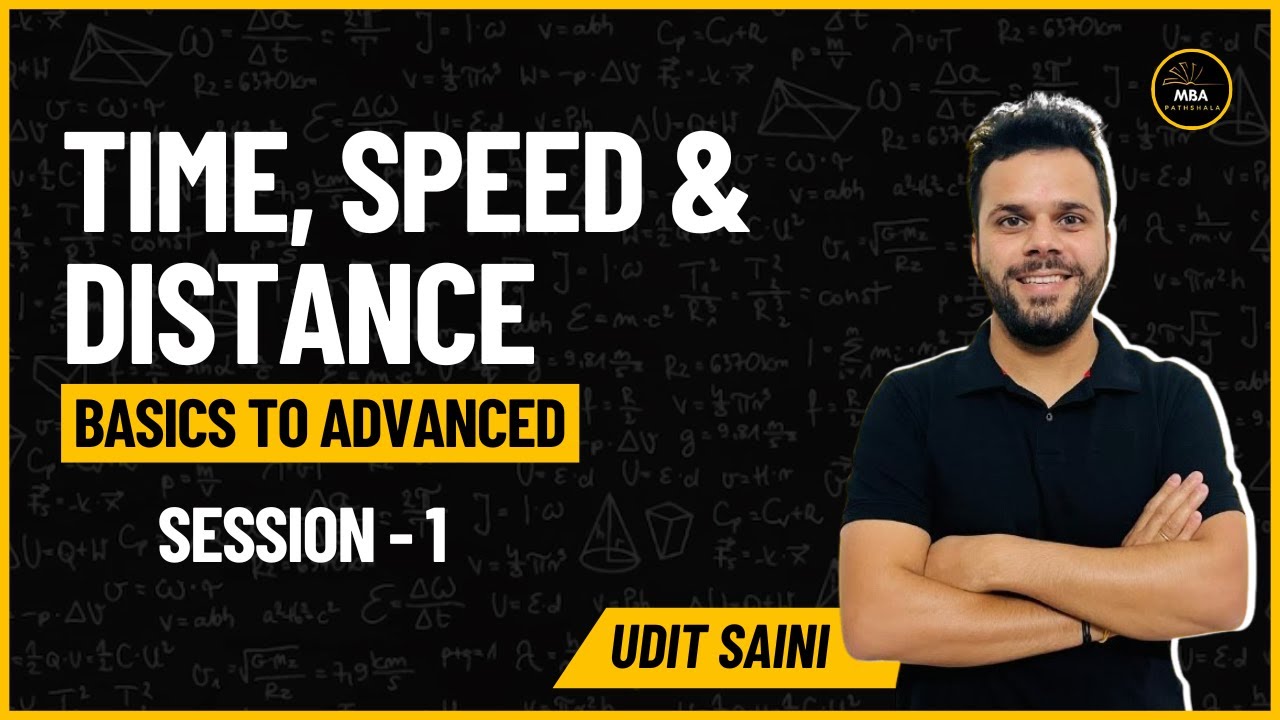The Speed, Distance and Time trick [No Ads]
Summary
TLDRThis lesson teaches the fundamental rules of speed, distance, and time using a simple DST triangle. By breaking down the formulas, learners can easily calculate distance (speed × time), speed (distance ÷ time), and time (distance ÷ speed). Through practical examples, such as a car traveling at 100 km/h or a snail moving at 10 mm/s, students learn how to apply these rules to real-life scenarios. The video also challenges viewers with more complex problems, like a rocket’s journey to the moon, reinforcing the importance of mastering these basic principles in everyday life.
Takeaways
- 😀 The speed, distance, and time rules can be easily remembered using the DST triangle.
- 😀 The DST triangle helps visualize the relationships between distance (D), speed (S), and time (T).
- 😀 The distance rule is: Distance = Speed × Time.
- 😀 The speed rule is: Speed = Distance ÷ Time.
- 😀 The time rule is: Time = Distance ÷ Speed.
- 😀 The DST triangle simplifies solving real-life problems involving speed, distance, and time.
- 😀 An example demonstrates how a car traveling at 100 km/h for 4 hours covers 400 km.
- 😀 Another example shows an express train traveling 1500 km in 3 hours at a speed of 500 km/h.
- 😀 A snail's speed can be calculated by dividing its distance of 80 mm by a speed of 10 mm/s, resulting in a time of 8 seconds.
- 😀 A challenge problem calculates a snake's speed as 15 m/s when it attacks from 3 meters away in 0.2 seconds.
- 😀 A rocket traveling from Earth to the Moon at 7 km/s would take 15.25 hours for the journey after converting the time from seconds to hours.
Q & A
What does the DST triangle represent in the context of this lesson?
-The DST triangle represents the relationship between Distance (D), Speed (S), and Time (T). It is used as a visual tool to help remember the formulas for calculating distance, speed, and time.
How can we calculate distance using the DST triangle?
-To calculate distance, multiply speed (S) by time (T). The formula is: Distance = Speed × Time.
What formula is used to find speed using the DST triangle?
-To find speed, divide distance (D) by time (T). The formula is: Speed = Distance ÷ Time.
How can we calculate time using the DST triangle?
-To calculate time, divide distance (D) by speed (S). The formula is: Time = Distance ÷ Speed.
What is the distance traveled by a car moving at 100 km/h for 4 hours?
-Using the distance formula (Distance = Speed × Time), the car travels 100 km/h × 4 hours = 400 km.
How do we calculate the speed of an express train that covers 1500 km in 3 hours?
-Using the speed formula (Speed = Distance ÷ Time), the speed is 1500 km ÷ 3 hours = 500 km/h.
How much time does it take for a snail to move 80 mm at 10 mm/s?
-Using the time formula (Time = Distance ÷ Speed), the time is 80 mm ÷ 10 mm/s = 8 seconds.
What is the speed of a snake that can attack in 0.2 seconds from 3 meters away?
-Using the speed formula (Speed = Distance ÷ Time), the snake's speed is 3 meters ÷ 0.2 seconds = 15 m/s.
How long would it take a rocket traveling at 7 km/s to reach the moon from Earth, which is 384,000 km away?
-Using the time formula (Time = Distance ÷ Speed), the time is 384,000 km ÷ 7 km/s = 54,914 seconds. Converting this to hours, the journey would take approximately 15.25 hours.
Why do we need to convert seconds to minutes and minutes to hours when calculating the rocket's travel time?
-We convert seconds to minutes and minutes to hours to express the travel time in a more understandable unit (hours), as 54,914 seconds is a large, unwieldy number.
Outlines

هذا القسم متوفر فقط للمشتركين. يرجى الترقية للوصول إلى هذه الميزة.
قم بالترقية الآنMindmap

هذا القسم متوفر فقط للمشتركين. يرجى الترقية للوصول إلى هذه الميزة.
قم بالترقية الآنKeywords

هذا القسم متوفر فقط للمشتركين. يرجى الترقية للوصول إلى هذه الميزة.
قم بالترقية الآنHighlights

هذا القسم متوفر فقط للمشتركين. يرجى الترقية للوصول إلى هذه الميزة.
قم بالترقية الآنTranscripts

هذا القسم متوفر فقط للمشتركين. يرجى الترقية للوصول إلى هذه الميزة.
قم بالترقية الآنتصفح المزيد من مقاطع الفيديو ذات الصلة

GCSE Physics Revision "Speed"

Speed Distance Time | Forces & Motion | Physics | FuseSchool

Time Speed and Distance 1 | CAT | XAT | IIFT | Arithmetic | Quantitative Aptitude | Udit Saini

GCSE Physics Revision "Distance-Time Graphs"

Posisi, Jarak, Perpindahan, dan Kecepatan | Kinematika 1D | Part 1 | Fisika Dasar

PT3 KSSM Mathematics Form 2 (Speed And Acceleration) Chapter 9 Complete Revision
5.0 / 5 (0 votes)
